ATTENTION! All pictures are presented in high resolution. To see Hi-Res images – just TWICE click on any picture. In other words, click small picture – opens the BIG picture. Click BIG picture – opens VERY BIG picture.
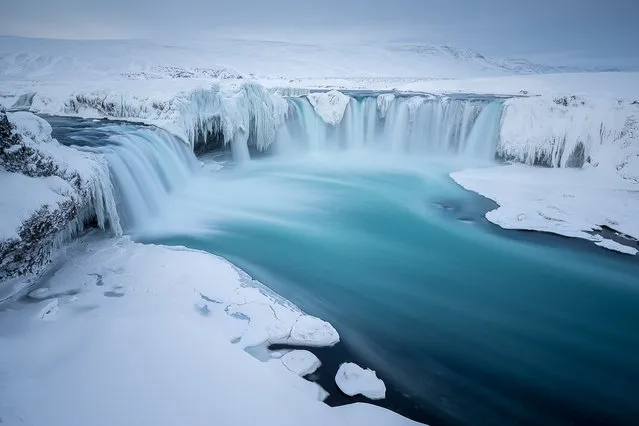
“Goðafoss”. Goðafoss is one of the most spectacular waterfalls in Iceland. Located in the central north of the island translucent aqua water cascades over the horseshoe shaped falls and races down the canyon. Icicles cling to its rock ledges and fresh snow lies across the landscape under soft diffuse light of the type that only Iceland can deliver. (Photo and caption by Joshua Holko/National Geographic Traveler Photo Contest)
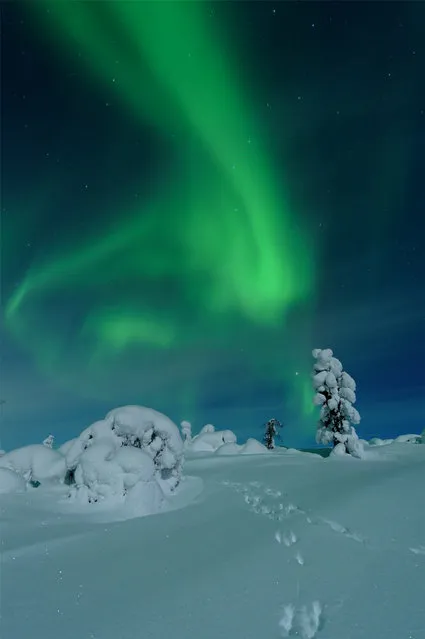
“Hare auroras”. In February 2013 I was for one week in Finnish Lapland to photograph Northern lights. On this cold night I was on a hill looking for a good spot when I came accross these hare tracks and snow-covered trees. Then the green dance started in the sky and my camera was ready to capture this moment. The aurora looks like a green hare which left the tracks in the snow. With the magic in the sky I shook the cold and stayed for a long time. Location: Hetta, Finland. (Photo and caption by Thomas Kast/National Geographic Traveler Photo Contest)
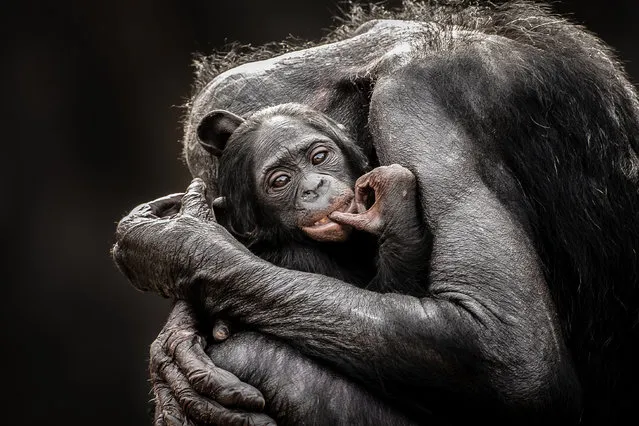
“One Mothers Love”. I love watching the affection and attention that Bonobos have for their young. They truly are a wonderful species of ape. Location: Jacksonville Zoo, Jacksonville, Florida, USA. (Photo and caption by Graham McGeorge/National Geographic Traveler Photo Contest)

“Shadows in dust”. A herd of wildebeest kick up dust at sunset, revealing their shadows. Location: Kuruman, South Africa. (Photo and caption by Max Seigal/National Geographic Traveler Photo Contest)

“Midnight Tree”. I hiked several hours through the night in Patagonia to find a tree I had seen a few days earlier and photograph it with the night sky. (Photo and caption by Max Seigal/National Geographic Traveler Photo Contest)
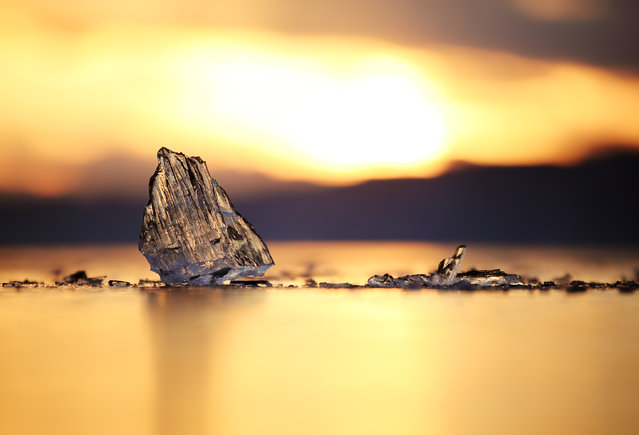
“Ice On the Lake”. I was walking around Lake Baikal at sunset and spotted this ice. I laid on the cold, frozen surface with my zoom lens and took this picture. Location: Lake Baikal, Russia. (Photo and caption by Edward Graham/National Geographic Traveler Photo Contest)
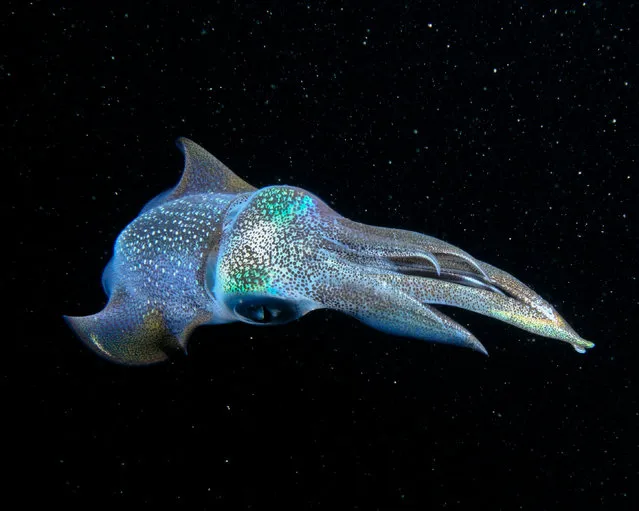
“The Galactic Squid”. While on a night dive in the waters off Okinawa Japan this reef squid showed up. The time and Air i spent trying to get close to him paid off. Location: Okinawa, Japan. (Photo and caption by Cameron Knudsen/National Geographic Traveler Photo Contest)
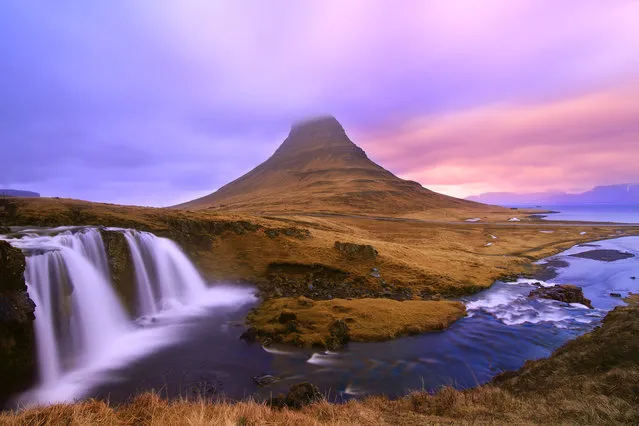
“Dreamy Waterfalls”. Kirkjufellsfoss Waterfalls is located in West Iceland. An amazing place to be for a Landscape Photographer. The Kirkjufell Mountain has created an ideal backdrop for the falls and the sun creates amazing color in that Arctic region during sunset. (Photo and caption by Neloy Bandyopadhyay/National Geographic Traveler Photo Contest)
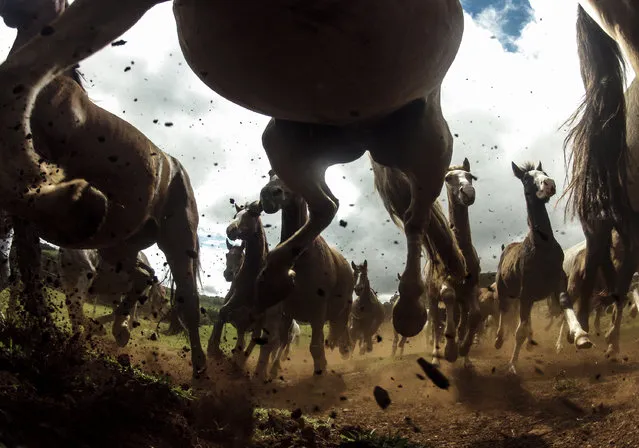
“The power of the Criollo”. The power of the Criollo horses at the Cabanha Ipuã located in Paranà, Brazil. The Criollo is the native horse of Uruguay (1910), Argentina (1918), Brazil (1932) and Paraguay. It may have the best endurance of any horse breed in the world next to the Arabian. (Photo and caption by Chris Schmid/National Geographic Traveler Photo Contest)
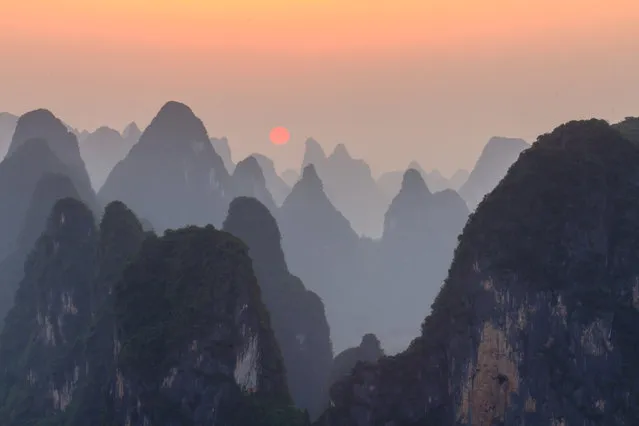
“Sunset at Li River”. Enjoy sunset on top of Lao Zhai mountain at the bank of Li River. Location: Xingping, Guangxi, China. (Photo and caption by James Bian/National Geographic Traveler Photo Contest)
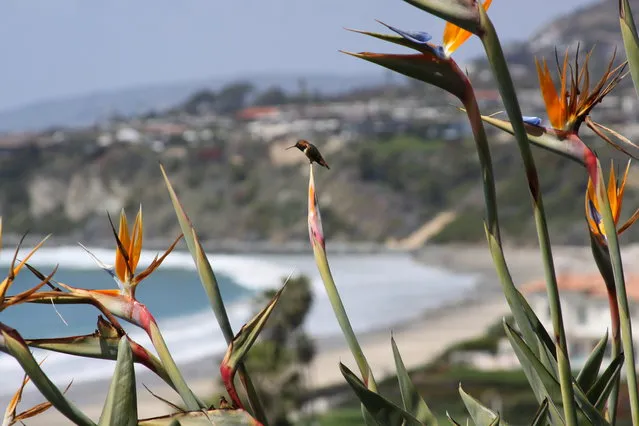
“Bird of Paradise”. Camoflauge. Location: Laguna Beach, California. (Photo and caption by Kathleen Sharif/National Geographic Traveler Photo Contest)
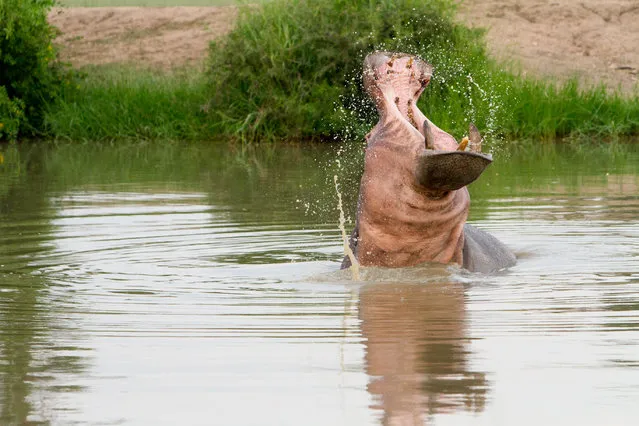
“Angry Hippo”. This was taking on a safari on private reserve in South Africa called Timbavati. (Photo and caption by Joey Senft/National Geographic Traveler Photo Contest)
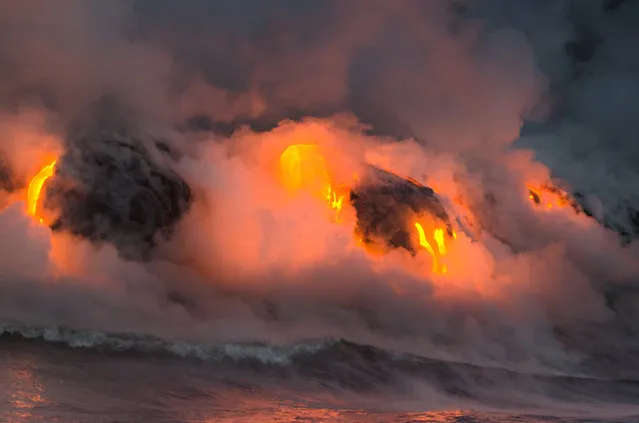
“Lava Dawn of Creation”. On a remote coastline of The Big Island of Hawaii, if the Godess Pele is willing, you can witness the primordial event of lava flowing into the depths of the ocean. You can literally feel the heat and smell the sulphur that emanates from this timeless, yet difficult to capture event. The waves crash relentlessly, but the constant billow of toxic steam attests that the lava stubbornly refuses to stop flowing. A constant struggle, the “Lava Dawn of Creation”. (Photo and caption by Mark Venner/National Geographic Traveler Photo Contest)
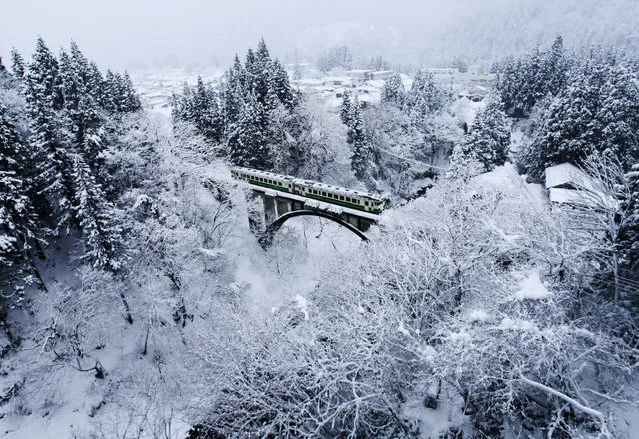
“White village”. Tadami line has been running the Aizu region of Fukushima Prefecture. Winter of Aizu region is famous as one of the leading heavy snowfall area in Japan. (Photo and caption by Hideyuki Katagiri/National Geographic Traveler Photo Contest)
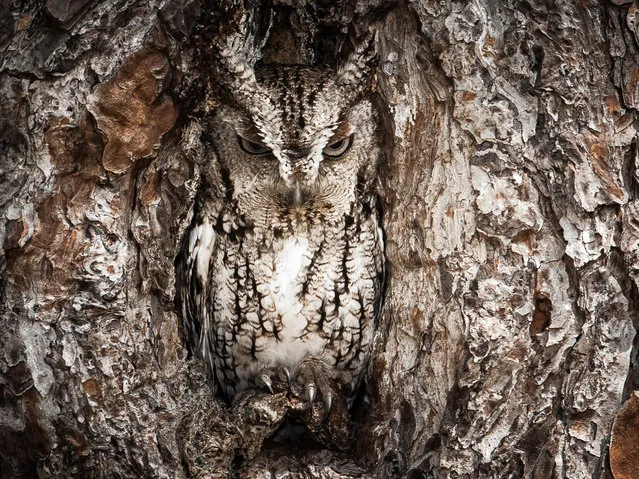
“Portrait of an Eastern Screech Owl”. Masters of disguise. The Eastern Screech Owl is seen here doing what they do best. You better have a sharp eye to spot these little birds of prey. Location: Okefenokee Swamp, Georgia, USA. (Photo and caption by Graham McGeorge/National Geographic Traveler Photo Contest)
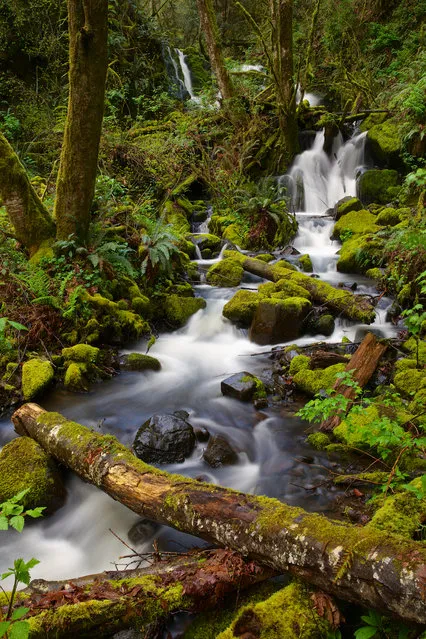
“Spring Cascade”. Cascade Mountains Spring Thaw to the Columbia River. Location: Outside Longview, Washington along the Washington / Oregon Border. (Photo and caption by Gary Migues/National Geographic Traveler Photo Contest)
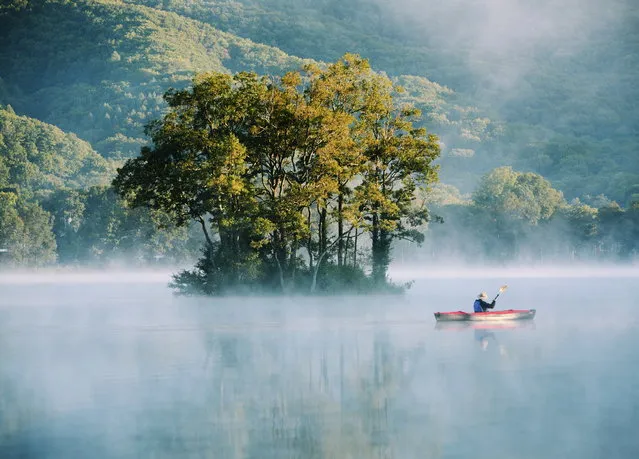
“In the morning”. Sobara lake is in Ura-bandai National park, Fukushima prefecture, Japan. (Photo and caption by Hideyuki Katagiri/National Geographic Traveler Photo Contest)
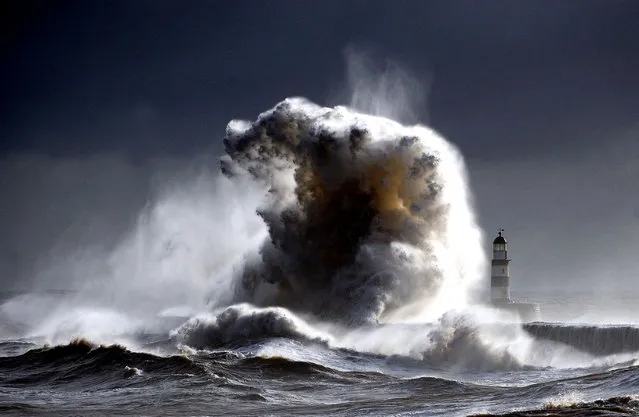
“Raging sea's Seaham 2”. A raging sea Dwarfs Seaham Lighthouse in County Durham in England, with 100ft waves after a cold front moved down from the north bringing freezing temperatures to the North of England. (Photo and caption by Owen Humphreys/National Geographic Traveler Photo Contest)
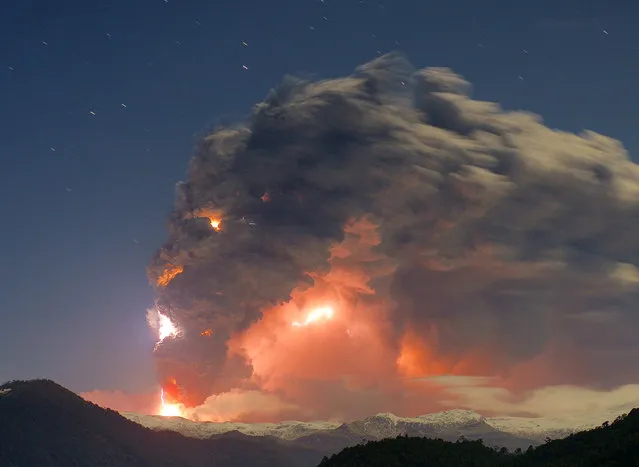
“When the earth speaking ”. Picture of the eruption of the Cordon Caulle. This was taken from the Antillanca mountain. However despite the distance, the sound was awesome and was the most incredible experiences of my life with my uncle, who accompanied me that night. Location: Lakes region, Chile. (Photo and caption by Rival Gustavo/National Geographic Traveler Photo Contest)
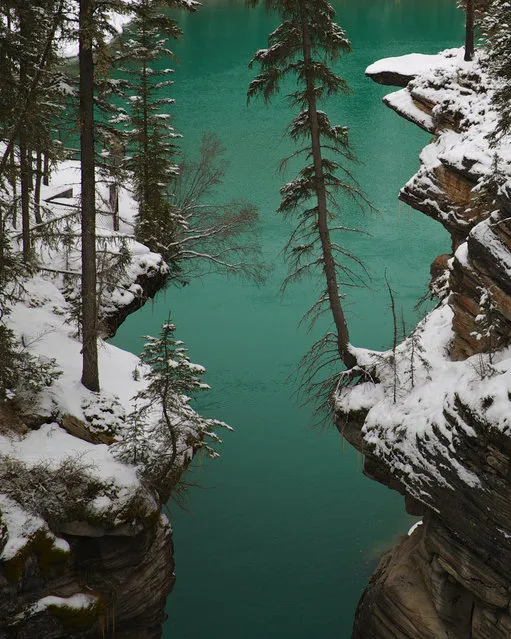
“Glacier Green”. Spring Thaw in the Canadian Rockies. Location: Jasper National Park in Alberta Canada. (Photo and caption by Gary Migues/National Geographic Traveler Photo Contest)
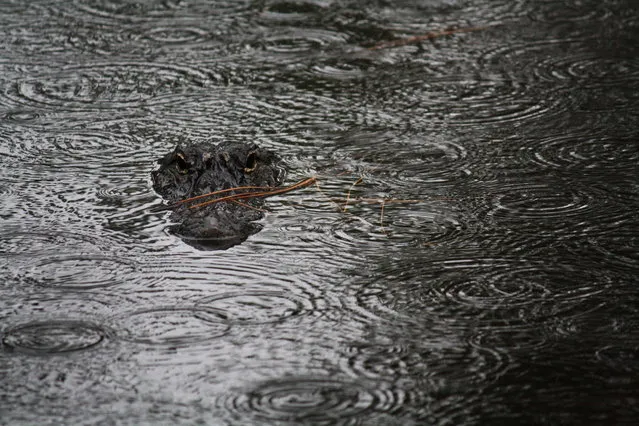
“In the Rain”. This photograph was taken while I was on vacation in South Carolina. It was a rainy miserable day until I happened uppon this alligator hanging out in a local pond. Location: Hilton Head, South Carolina, USA. (Photo and caption by Kandace Stroupe/National Geographic Traveler Photo Contest)
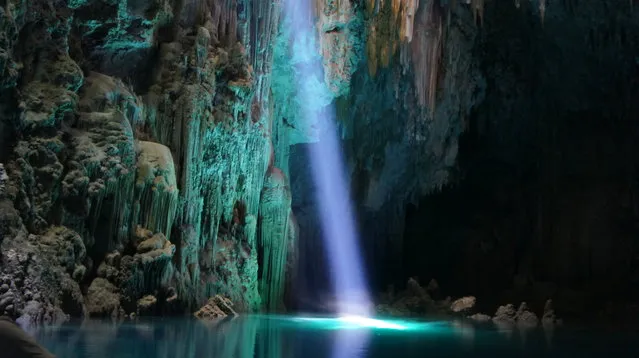
“Anhumas Abyss”. Anhumas Abyss is a cave that access is by a gap that exists in the Rock through vertical Rappelling techniques. To the base of the cave is 72 meters of vertical drop, until the deck on the lake of clear water. That can reach 80m depth. The fall offers a unique overview of the cave and having the sensation of being inside the Earth. When the sunlight comes down by the gap, its reflects the colors green and blue from the magnezium and limestone in the cavern rocks. Location: Bonito, Mato Grosso do Sul, Brazil. (Photo and caption by Kedson Silveira/National Geographic Traveler Photo Contest)
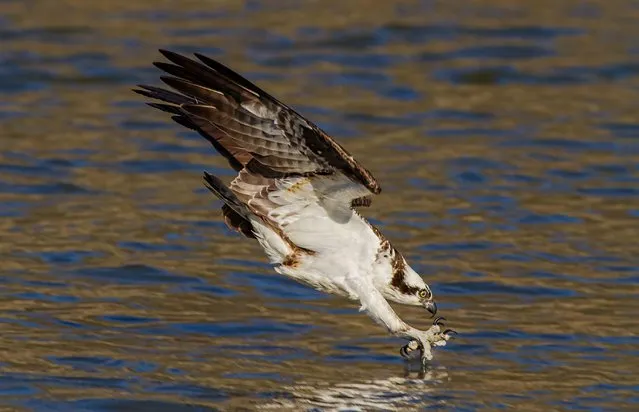
“Osprey just before impact”. I took this photograph near the spillway of Jordan lake dam shortly after the Osprey returned to my area for the 2013 season. Early in the spring, you can find them fishing at the base of the dam. I love photographing wildlife, but have a special place in my heart for any type of raptor. Location: Moncure, North Carolina, USA. (Photo and caption by Brad Lenear/National Geographic Traveler Photo Contest)
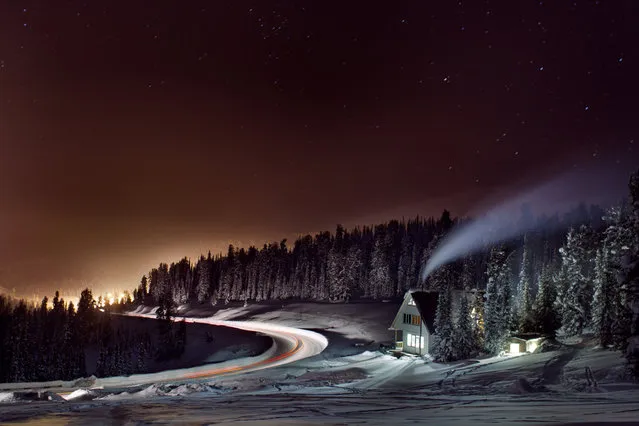
“The house stands, the lights are on...” ISO 800, F 3,2, 38 seconds. On the way to Ergaki, Krasnoyarsk Krai, Russia. Twilight away the lights of one of the bases. (Photo and caption by Alexander Nerozya/National Geographic Traveler Photo Contest)
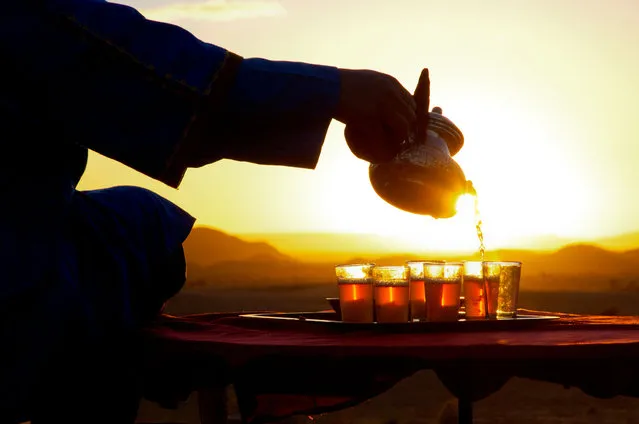
“Sunset in Sahara”. After a day's hiking into Sahara, our guide welcomed us with a cup of Moroccan mint tea and this amazing scenery in Sahara dessert. (Photo and caption by Qiujia Wang/National Geographic Traveler Photo Contest)

“Unexpected Alliance”. I have seen alligators and turtles together in ponds before, but never like this! I was at Bluebill Pond in Harris Neck NWR when I saw what I thought was an alligator sunning itself on a stump. As I got closer I realized that it was actually perched on the back of a turtle! I wish I had been there to witness how this surprising esprit de corps had came to pass! Location: Harris Neck National Wildlife Refuge, Townsend, GA, USA. (Photo and caption by Mary Ellen Urbanski/National Geographic Traveler Photo Contest)
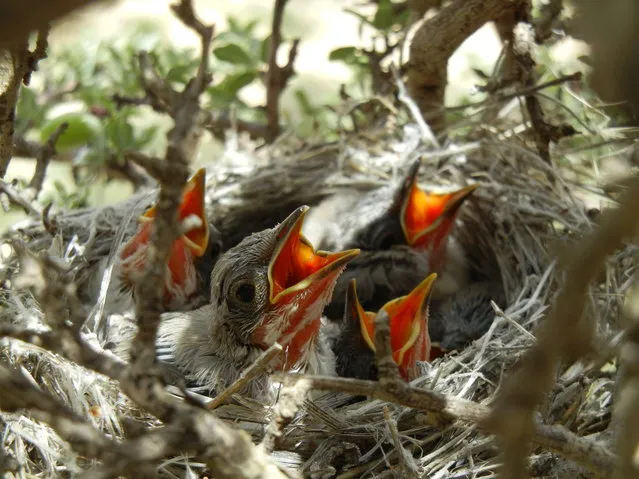
“In Seeking Food!” Hungry birds waiting for mother! Location: Derak Mountain, Shiraz, Iran. (Photo and caption by Nariman Noorbakhsh Sabet/National Geographic Traveler Photo Contest)
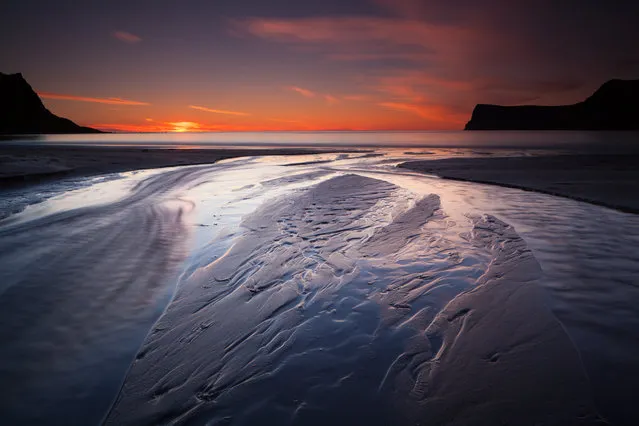
“The Midnight Sun”. The midnight sun in northern Iceland. I shot this from a shallow stream that was slowly flowing into the Greenland Sea (79 second exposure). (Photo and caption by Ken Bower/National Geographic Traveler Photo Contest)
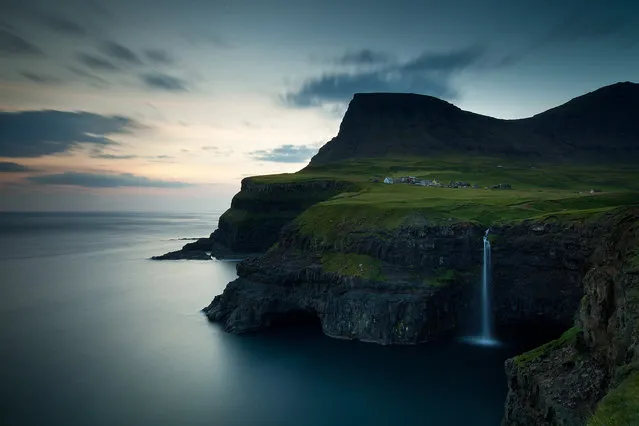
“Gásadalur”. Gásadalur is a small and secluded village on the Faroe Islands. Until recently the village was accessible only by boat, helicopter or by walking over the surrounding mountains which I tried when I was younger. Today you can visit Gásadalur by a tunnel connecting the village to the main infrastructure and last August I went back and brought my camera. (Photo and caption by Hans Juul Hansen/National Geographic Traveler Photo Contest)
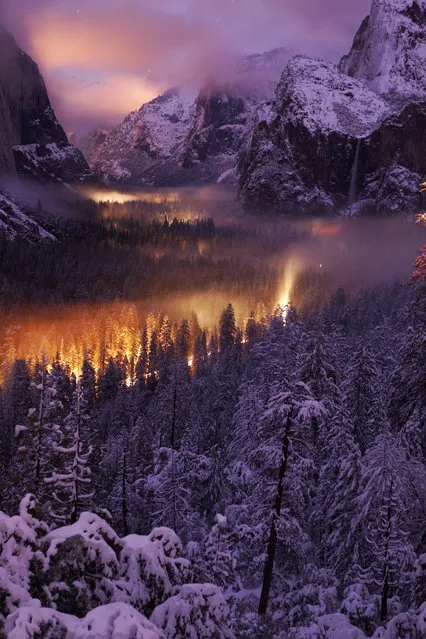
“Yosemite Valley at Night”. The mist on the valley floor reflects car lights driving through. Location: Yosemite National Park. (Photo and caption by Phil Hawkins/National Geographic Traveler Photo Contest)
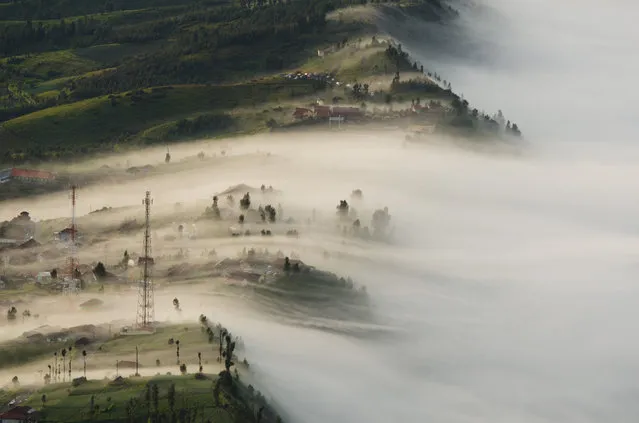
“Overflow”. This photo was shot in a scenic view of Cemoro Lawang which is a very small town north-east of Mount Bromo. The misty tsunami is appearing at every dawn that hit the little settlement which located at the altitude of 2,217 meters above sea level. People living a simple life in this mountaineous town will be enveloped by misty air with a sense of breathtaking and harmony in contrary to an active volcano's temper. Location: Bromo-Tengger-Semeru National Park, East Java, Indonesia. (Photo and caption by Yuan Choong Chin/National Geographic Traveler Photo Contest)
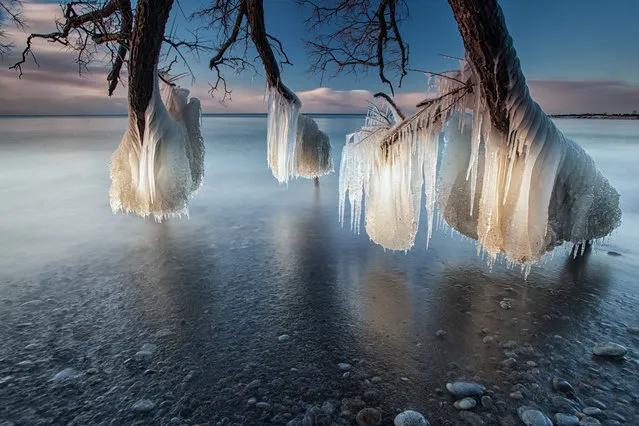
“Tree of Ice”. Taken on the shores of Lake Ontario, Whitby, Canada . A fallen tree stretches out into the lake and as a combination of ice cold water and freezing temperatures hit the tree its freezes on contact and in time creates some beautiful ice structures. (Photo and caption by Charles Corbin/National Geographic Traveler Photo Contest)
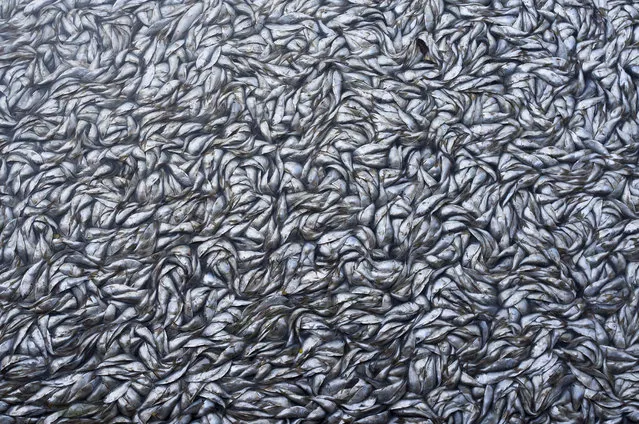
“Dead fishes”. This photo shows one of the greatest natural tragedies in Rio de Janeiro, the mass death of fish in the Rodrigo de Freitas lagoon. This is caused by lack of oxygen in the water due to wrong manipulation by the authorities. Location: Lagoa Rodrigo de Freitas, Rio de Janeiro, Brazil. (Photo and caption by Luis Gutman/National Geographic Traveler Photo Contest)
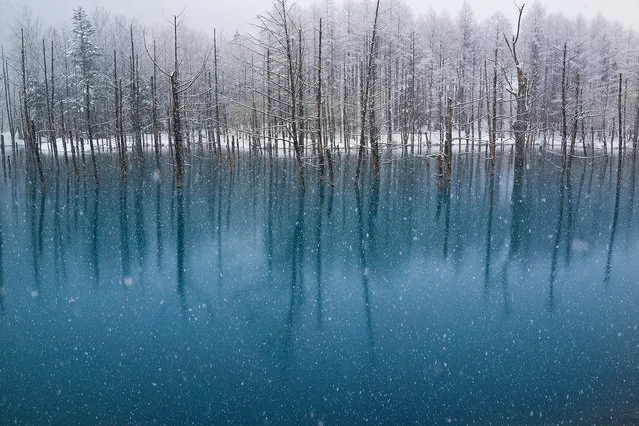
“Blue Pond-The Snowfall in May”. In Hokkaido, it was an uncommon thing but it snowed in May of this year.A lot of tourists dislike its snowing in the spring. However, the tourists who visited “a blue pond” enjoyed plainly.It is because they could see this beautiful snow scene.This place has a view drawing tourists from around the world. All are nature's tints. Location: Biei in Hokkaido, Japan. (Photo and caption by Kent Shiraishi/National Geographic Traveler Photo Contest)
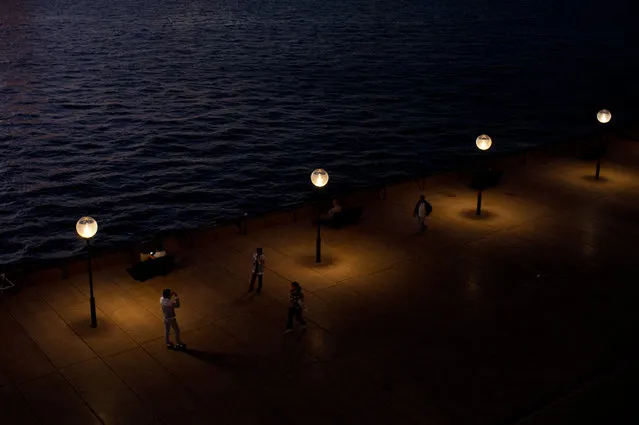
“Harbour Walk”. People pictured enjoying a warm late summer evening near the Sydney Opera House. May, 2013. (Photo and caption by Joel Ford/National Geographic Traveler Photo Contest)
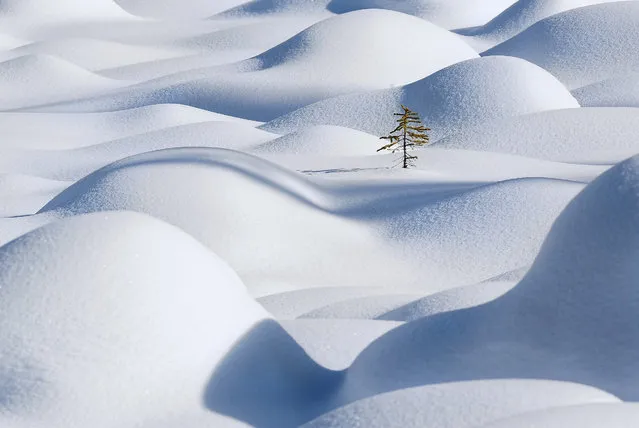
“Standing in the waves”. Imagine yourself is this lone tree, standing in the snow waves. You might not be able to realize that you just became the main subject of an image, but you do realize something beautiful is happening. Location: Jasper national park, AB, Canada. (Photo and caption by Victor Liu/National Geographic Traveler Photo Contest)
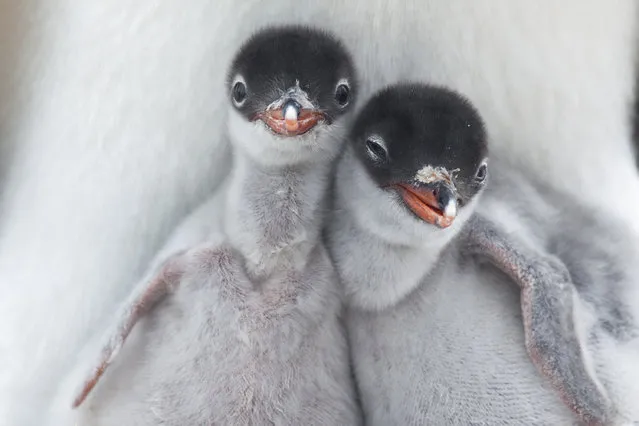
“Gentoo Chicks”. Two newly hatched Gentoo Penguin chicks get their first glimpse at the Antarctic wilderness. Location: Port Lockroy, Antarctic Peninsula. (Photo and caption by Richard Sidey/National Geographic Traveler Photo Contest)
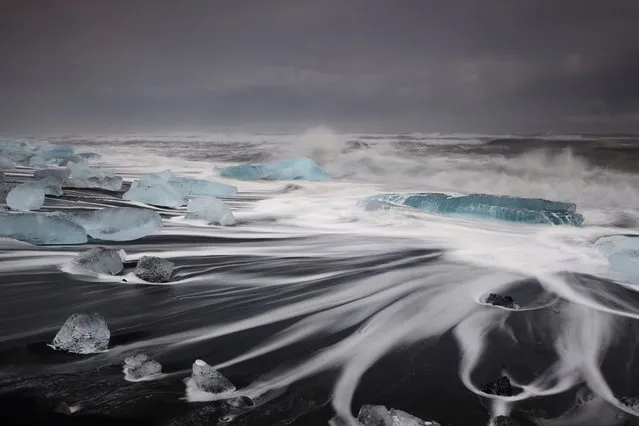
“The Octopus”. This is a one-second exposure of the trails left by a crashing wave over small icebergs on Jökulsárlón beach; I think it looks a bit like an octopus. Location: Jökulsárlón, South-East Iceland. (Photo and caption by Sophie Carr/National Geographic Traveler Photo Contest)
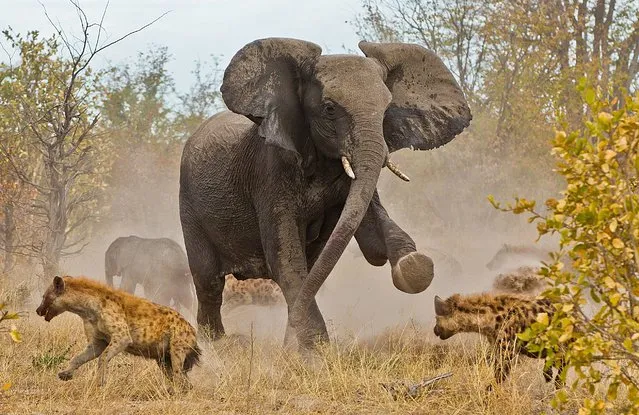
“Get away!” A group of 12-14 hyenas were chasing a herd of 7-8 elephants. The elephant herd included 2 adult females, a few teenagers, and a baby that was a few days old (belonging to one of the adult females). The hyenas were trying to get at the baby. In this picture, the mother is kicking at the hyenas. Location: Savuti Concession, Chobe National Park, Botswana. (Photo and caption by Jayesh Mehta/National Geographic Traveler Photo Contest)
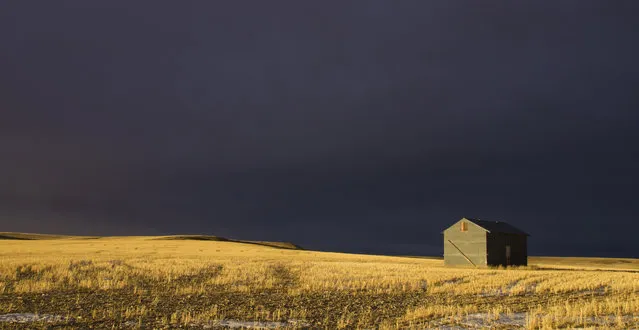
“Troubled Skies”. An impending storm moving in over a beautifully lit field in the evening in Montana, USA. (Photo and caption by James Lam/National Geographic Traveler Photo Contest)
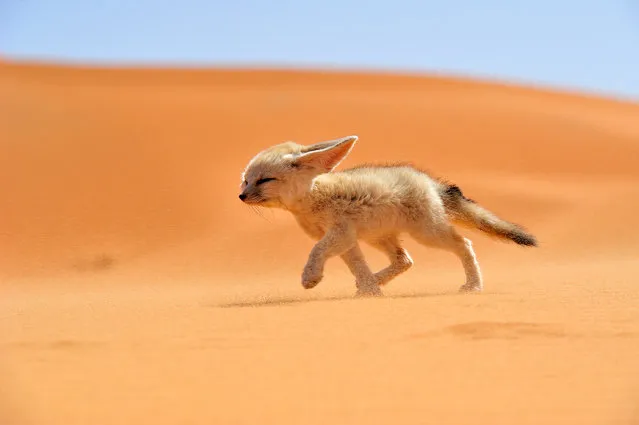
“Fénec – The soul of the desert”. The fennec, or desert fox is a canine mammal species of the genus Vulpes, which inhabits the Sahara Desert and Arabia. With its features ears, this is the smallest species of the family Canidae. It is endangered and its main threat is illegal in other countries. Location: Morocco. (Photo and caption by Francisco Mingorance/National Geographic Traveler Photo Contest)
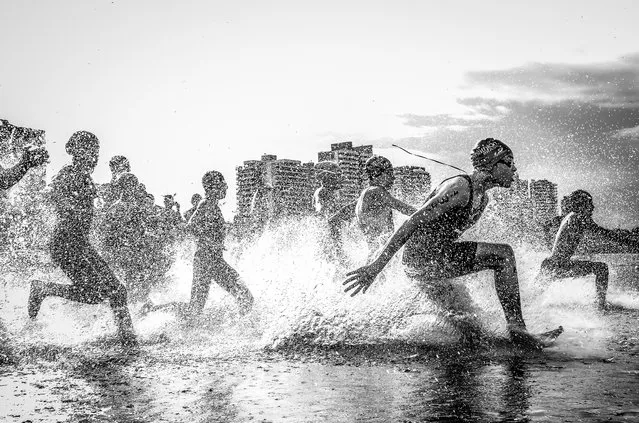
“Dig me river”. I was in Manaus/Amazon during the Brazilian Aquathlon (swimming and running) championship in. This river is called Rio Negro (Black River) due to water color. Rio Negro is the largest left tributary of the Amazon, the largest blackwater river in the world. While the name Rio Negro means Black River, its waters aren't exactly black; they are similar in color to strong tea. The dark color comes from humic acid from incomplete breakdown of phenol. I photographed it from the water and my lens got completely wet, but there was so energy in this boys that I just didn't worry about that. Location: Rio Negro, Ponta Negra Beach, Manaus, Amazon, Brazil. (Photo and caption by Wagner Araujo/National Geographic Traveler Photo Contest)
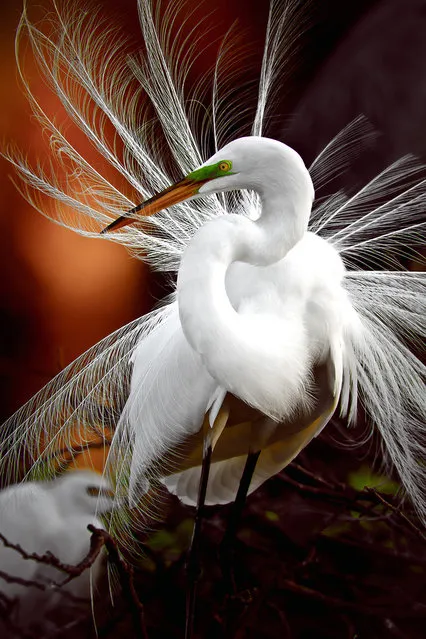
“Displaying”. Egret displaying sexual feathers. Location: Wakodahatchee Wetlands Delray Beach FL. (Photo and caption by Gretchen Kaplan/National Geographic Traveler Photo Contest)
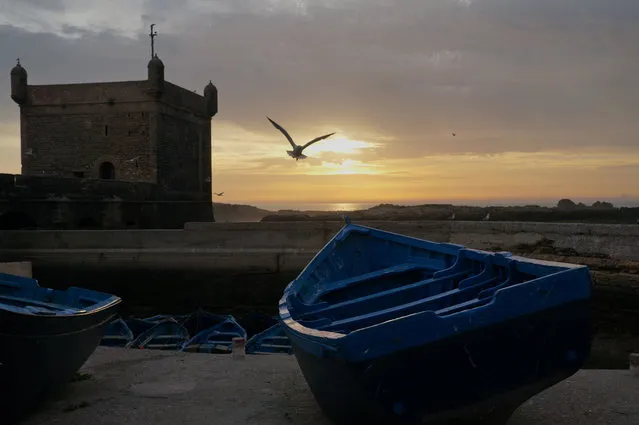
“Essaouira Sunset and Seagull”. Every Atlantic sunset in Essaouira is different, but this one was particularly breathtaking. Seagulls – and their constant harsh cries – are ubiquitous in Essaouira and it is difficult to take a photo without one. But this bird could not have been more beautifully placed. The romantic ruggedness of Essaouira is evinced here by the fishing boat and the old fortress tower. Location: Essaouira, Morocco. (Photo and caption by Larissa Naylor/National Geographic Traveler Photo Contest)
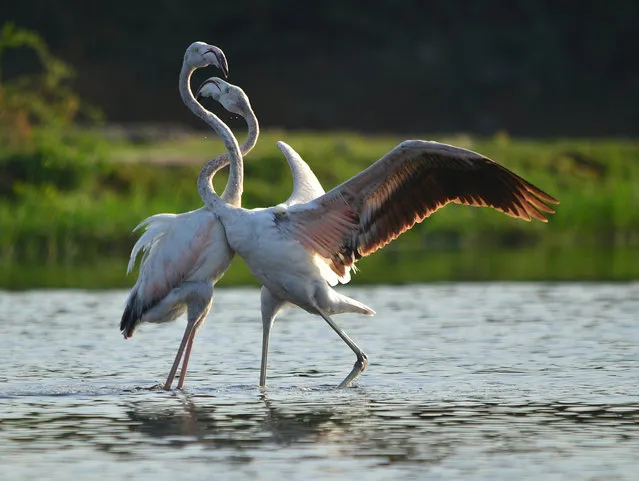
“Just like a snake”. Whle feeding time when they come close to each other they start fighting for there territorial behaviour . Some times they give some fantastic pose when the fight with beak with eachother, i have to shoot constantly for nearly one week to get this kind of magic moments. Its olooks like that two snake are mating with eachother. Greator flamingos is on e of the migratory birds india and they sometimes do nest at little runn of kutch. Location: Outskirt of Jamnagar City, India. (Photo and caption by Amish Patel/National Geographic Traveler Photo Contest)
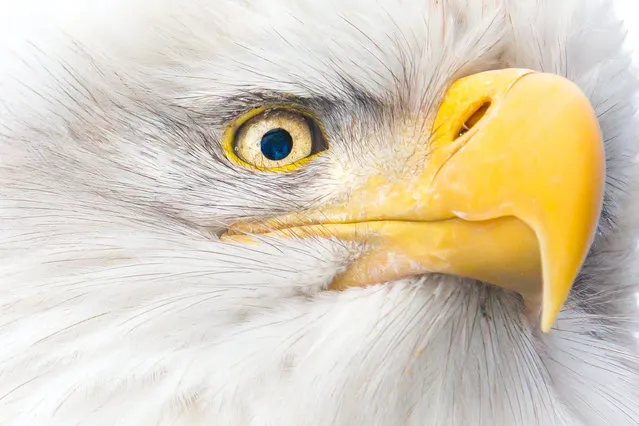
“Eye of the Eagle”. Bald Eagles, found only on the North American continent, can fly up to 30 mph and dive for their prey at speeds of up to 100 mph. An eagle's eye is only slightly smaller than a human's, but its sharpness is at least four times that of a person with perfect vision. With their keen eyesight, eagles can spot fish at distances of up to one mile. Along the Chilkat River, a warm water reservoir creates an opening in the ice that provides a fresh supply of late salmon and other fish during winter months. Location: Haines, Alaska. (Photo and caption by John Chaney/National Geographic Traveler Photo Contest)
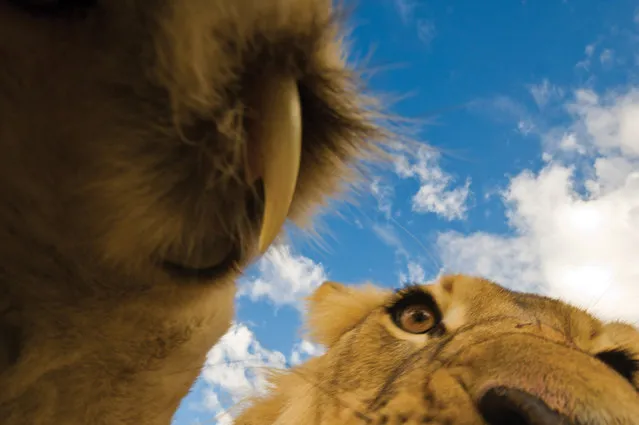
“Game Over”. I have spent the last 4 and a half years in the Kalahari Desert capturing the wildlife and is currently busy with a night-project to capture all the nightlife. I have buildt a hidden camera within a termite mound-hide and try to capture interesting close-ups. All the settings was in manual and I did pre-focus the camera and triggered it with a wireless remote. Here the two pride males of the southern region inspects this termite mound that makes clicking sounds. I always wanted to get a shot of what it will look like from a “prey's” point of few! Location: Kgalagadi Transfrontier Park, South Africa. (Photo and caption by Hannes Lochner/National Geographic Traveler Photo Contest)
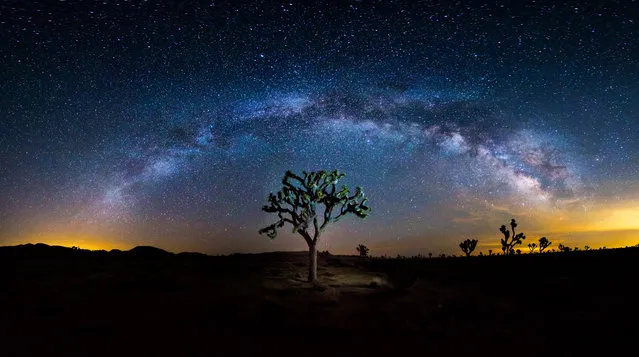
“The Wisdom Tree”. Milky way rising over the Joshua Tree in Joshua Tree National park, Calif. (Photo and caption by Manish Mamtani/National Geographic Traveler Photo Contest)
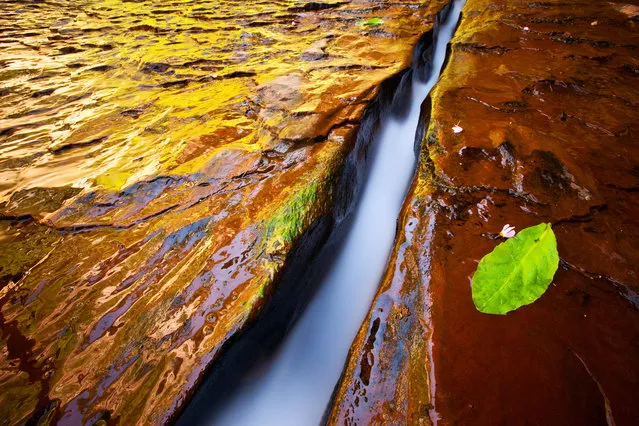
“Zion Waters”. The North Fork of the Virgin River in Zion National Park flows through this thing crack in the sandstone. The wet rock reflects both the yellow canyon wall and the blue sky overhead. Location: Zion National Park, Utah, USA. (Photo and caption by Timothy Faust/National Geographic Traveler Photo Contest)
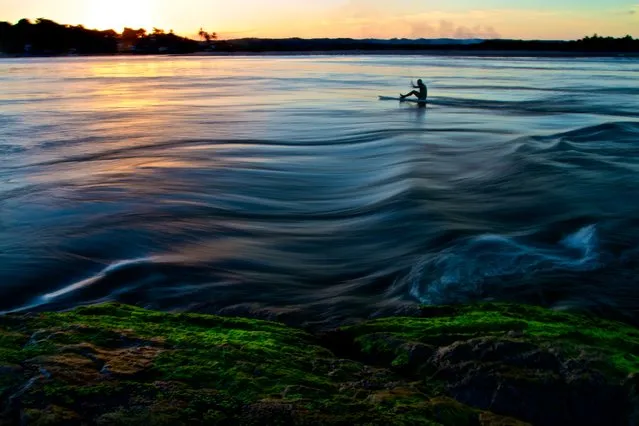
“Untitled”. Kayak Adventures. Itacare, Bahia, Brazil. (Photo and caption by Marcio Pimenta/National Geographic Traveler Photo Contest)
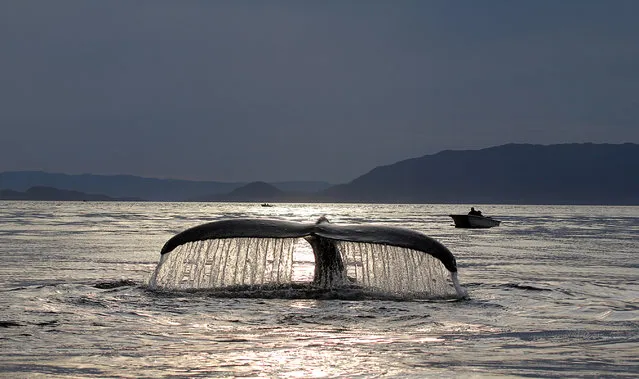
“A Whale Of A Tail”. September 2011 was a GREAT month for whales! We spent 3 wonderful days out on the water watching the whales bubble feed! This photo was taken at the mouth of Clover Passage, looking across Clarence Strait, just outside of Ketchikan, Alaska. Location: Clover Passage, Ketchikan, Alaska. (Photo and caption by Barbara Greninger/National Geographic Traveler Photo Contest)
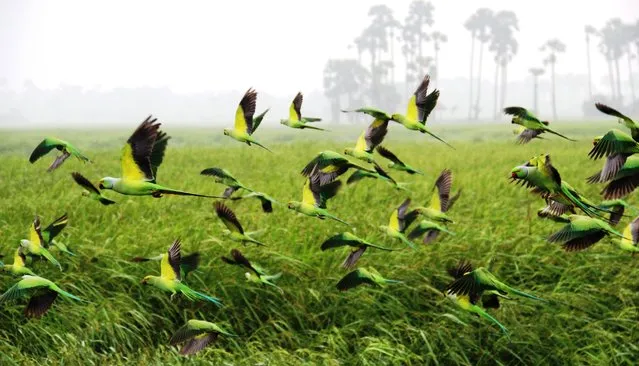
“Flying Parrots From Paddy Field ”. This photo captured 30th december 2012, at paddy field in jaffna. Jaffna, city and capital of northern part of the sri lanka. Early morning,i walked along the paddy field with my cannon 600d camera to take some photos of migrating birds,luckily got the chance to take this wonderful moment. Location: Jaffna , Srilanka. (Photo and caption by Muraleetharan Rajasuntharam/National Geographic Traveler Photo Contest)
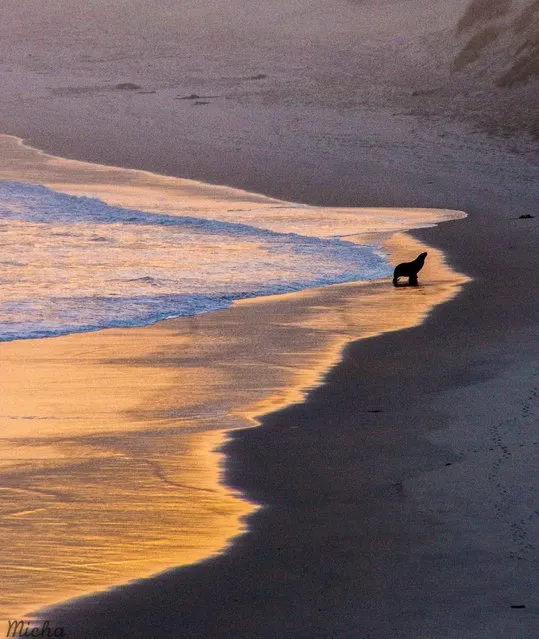
“Posing for sunset”. Special moments happen when you patiently wait for Penguins. Location: Otago Peninsula, New Zealand. (Photo and caption by Michael Blankstein/National Geographic Traveler Photo Contest)

“Gate to Heaven”. Santorini is essentially what remains after an enormous volcanic explosion. It is now a famous tourist attraction due to its magic sunsets by & dramatic cliffs – and the island is especially popular among honeymooners. Location: Santorini, Greece. (Photo and caption by Pål Sundsøy/National Geographic Traveler Photo Contest)
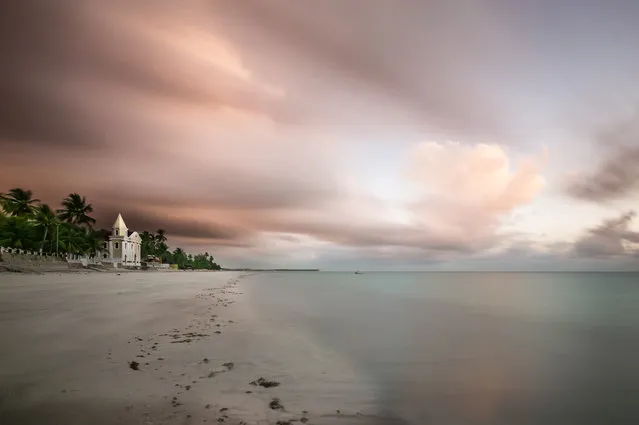
“Churh by the ocean”. Morning in Pernambuco, Northeastern Brazil. This charming and fantastic church of São Pedro, was laying at the ocean, a calm and serene scene. Wind was blowing fast, so I decided to show the cloud movement using a ND filter. (Photo and caption by Dante Laurini/National Geographic Traveler Photo Contest)
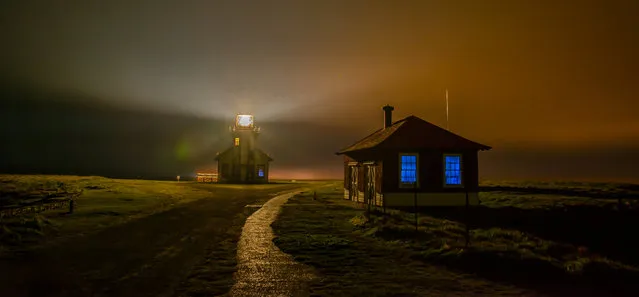
“Foggy Night at Point Cabrillo Light Station ”. Photo taken on a very foggy night at Point Cabrillo, near Mendocino, California. The old blacksmith building could only be seen when hit by the light of the lighthouse. (Photo and caption by Melissa Loeffler/National Geographic Traveler Photo Contest)
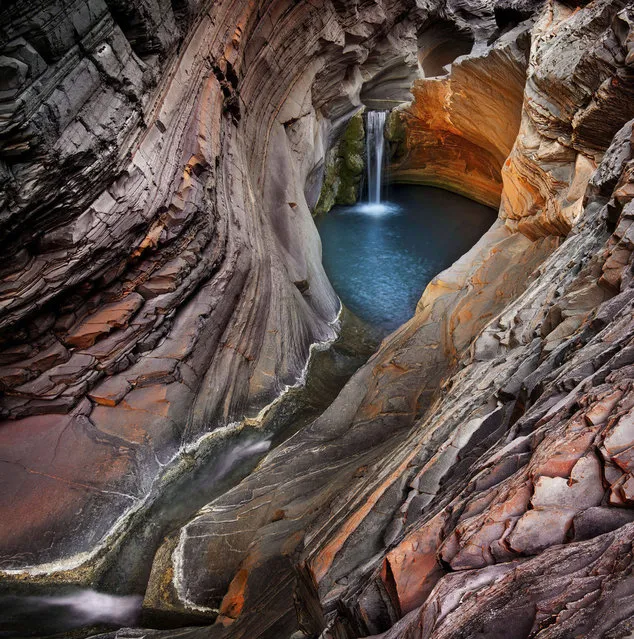
“Hamersley Gorge”. Karijini National Park in WA is one of the largest and most photogenic national parks in Australia. The park is famous for its sheer gorges, waterfalls, sparkling rock pools and cool swimming holes. Karijini is about 275km south of Port Hedland and 100km east of Tom or Paraburdoo. The park is all about exploring serpentine tunnels of marbled rock, clambering over boulders, squeezing through narrow tunnels, inching your way along ledges, paddling through subterranean waterways and descending deep into chasms which have been eroded into the landscape over two billion years. (Photo and caption by Ignacio Palacios/National Geographic Traveler Photo Contest)
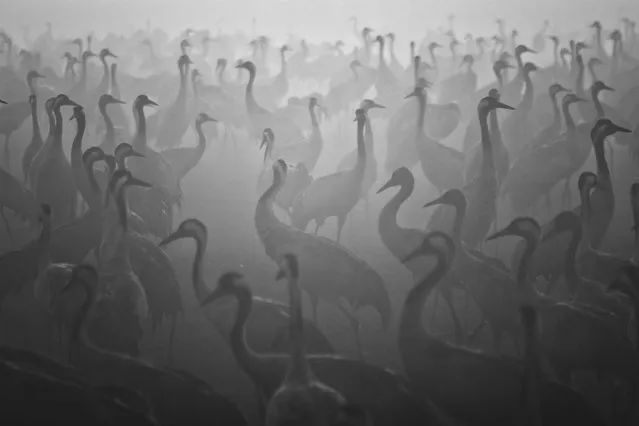
“Lost”. Morning fog on Hula Lake, Israel. (Photo and caption by Guy Cohen/National Geographic Traveler Photo Contest)

“Living”. An unreal warm day on the summit of Denali after 11 days of hiking. 20,320 feet and shirtless! Location: Denali National Park, Alaska, USA. (Photo and caption by Clay Roberts/National Geographic Traveler Photo Contest)
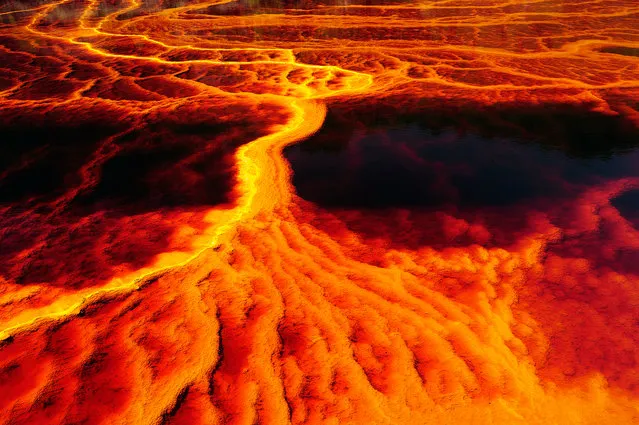
“Rio Tinto the heart of the earth”. They are landscapes from another planet who do not belong to the Earth, the waters of another world, colors that defy the imagination. The natural acidity and mining activity since ancient times in the area of Rio Tinto made a channel so inhospitable as attractive to science. The striking colors that are seen in the different sections of the river are caused by the precipitation of iron, and its alignment with other elements such as copper, zinc, nickel, arsenic and chromium. A chemical palette colors born impossible. Location: Río Tinto. Spain. (Photo and caption by Francisco Mingorance/National Geographic Traveler Photo Contest)
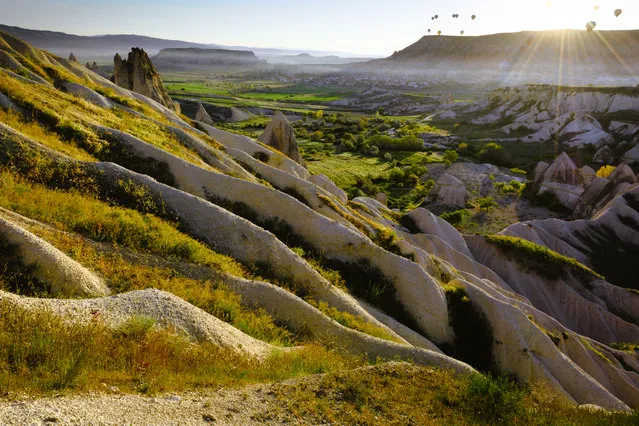
“Sunrise in Cappadocia”. This pic was taken in Cappadocia near Love Valley. The sunrise was very beautiful but the frame was full of flare from the direct sunlight coming into the lens. Then one of the balloons covered the sun for a fraction of a second, I pressed the shutter then. No flare, it was a lucky shot. Location: Cappadocia, Turkey. (Photo and caption by Carlos Andres Duenas/National Geographic Traveler Photo Contest)
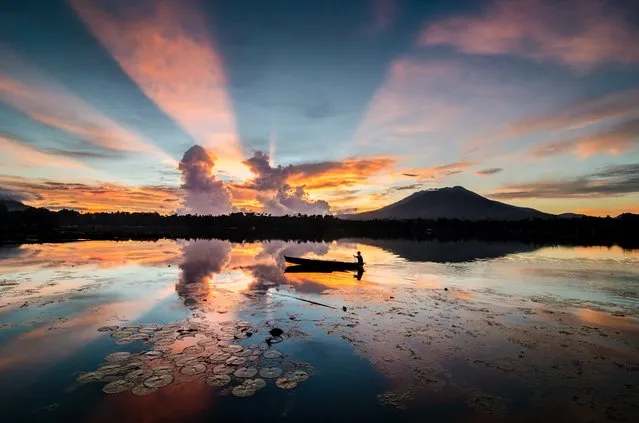
“Rays of Sunrise”. Amazing moments when rays of sun appear at sunrise its only last for a few seconds, still water, reflection and a fisherman passing thru. Location: Sampaloc lake, San Pablo City, Laguna, Philippine. (Photo and caption by Danilo Dungo/National Geographic Traveler Photo Contest)
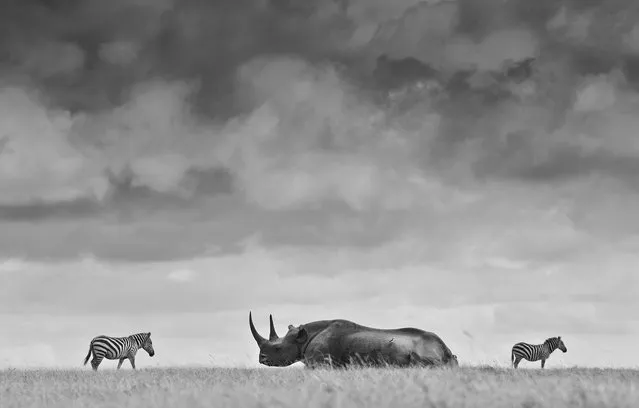
“Rhino under brooding sky”. A Black rhino and two plains zebra under an overcast sky on the plains of Laikipia, Kenya. (Photo and caption by Robin Moore/National Geographic Traveler Photo Contest)
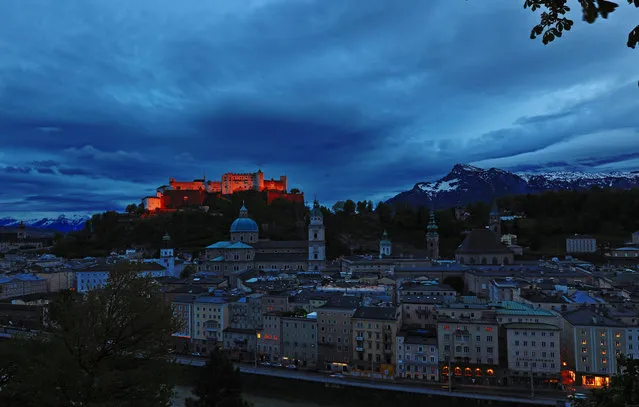
“Castle in the Setting Sun”. The night is approaching, so is a storm. Suddenly, a beam of light from the setting sun illuminates the Hohensalzburg Fortress, dying it orange for just seconds, giving birth to this miraculous image. (Photo was taken in May, 2012). Location: Salzburg, Austria. (Photo and caption by Feng Xue/National Geographic Traveler Photo Contest)
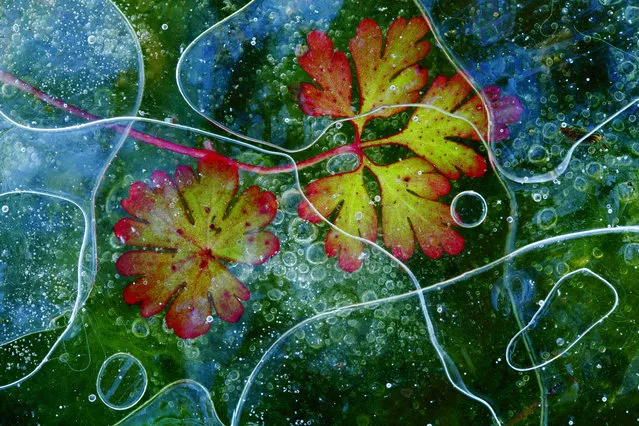
“Snowmelt in the mountains”. This picture was taken in Spain – Parque natural “Sierra de Grazalema”. In small meadow ponds live slightly eutrophic freshwater algae. These algae live with herbaceous plants and when the ponds freeze, attractive compositions are created. Here we see frozen bubbles and lines formed in thawing ice. I used a macro lens because this wild geranium leaf is very small. (Photo and caption by Andres Miguel Dominguez/National Geographic Traveler Photo Contest)
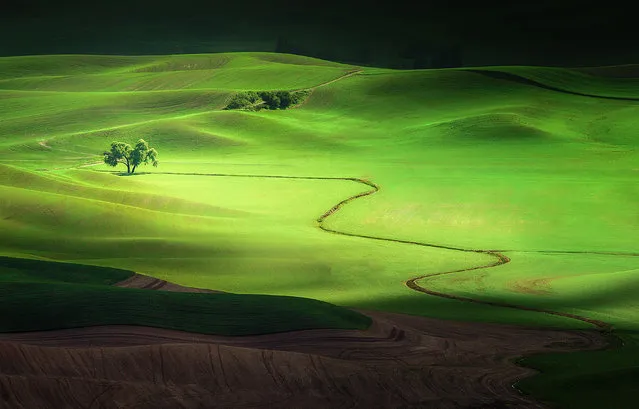
“Shadows and Light”. A lone tree in the Palouse region of Washington glows brilliantly in the sunlight as clouds pass by, isolating it in a band of light. Undulating hills provide depth to the lit scene, captured during the brief growing season where the wheat is a rich shade of green. Location: Colfax, Washington. (Photo and caption by Jesse Summers/National Geographic Traveler Photo Contest)
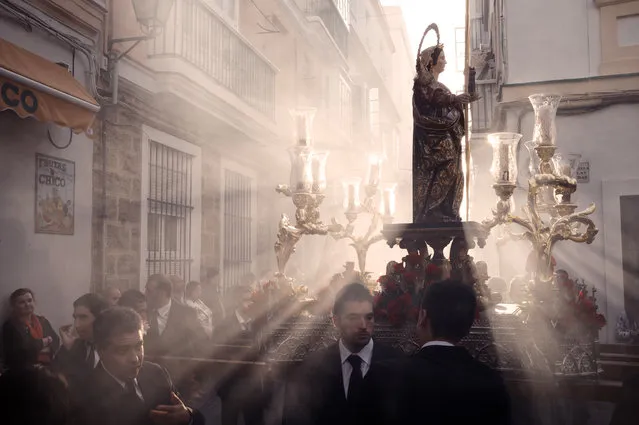
“Ave Maria”. Religious procession in Cadiz. Location: Cadiz, Spain. (Photo and caption by Evgeny Surgutsky/National Geographic Traveler Photo Contest)
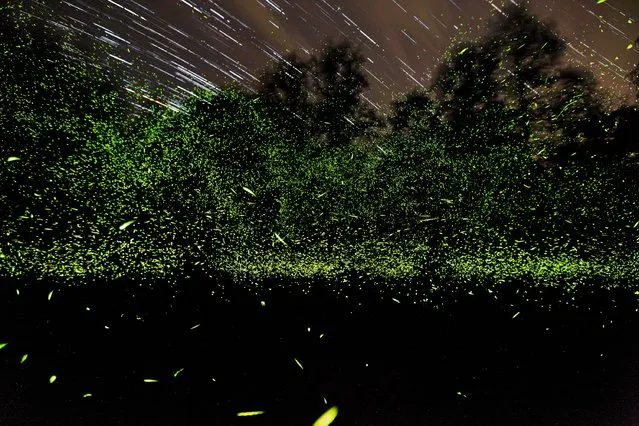
“Light dancers”. Great Smoky Mountains is known for its Synchronous Fireflies during each early summer. This year I spent 3 consecutive nights in early June staying in mountain area trying to capture this phenomenon. I was so lucky to witness a spectacular light show on an actual rainstorm night. I left my camera there for an 1.5 hour exposure. There were tens of thousands of fireflies dancing around using their light to paint the scene in front of me and I was the only audience of their light show. They are amazing artists of Mother Nature. Great Smoky Mountains National Park. (Photo and caption by Cheng Niu/National Geographic Traveler Photo Contest)
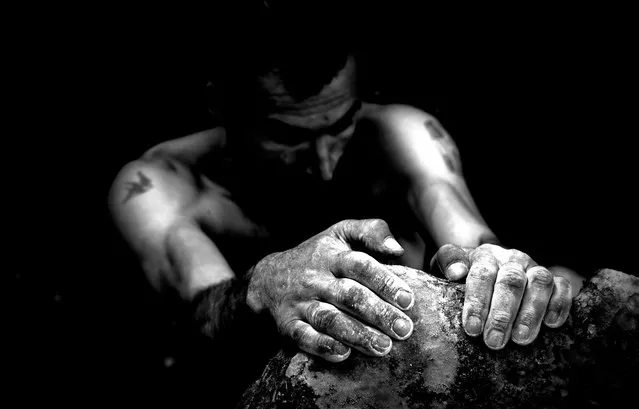
“Reach out and touch faith...” I took this picture after reached the top of a rock in Macomer (Sardinia), my friend was climbing almost got the top and I shoot! This picture wants emphasize the hands as strength used for practicing free climbing. Location: Macomer, Sardinia, Italy. (Photo and caption by Marcello Perino/National Geographic Traveler Photo Contest)
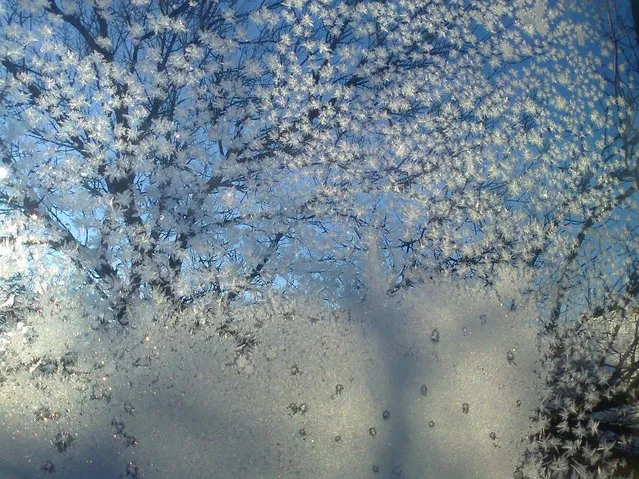
“Winter blossoms”. Frost on window in the form of blossoms against the tree outside in background makes it look like a blossoming tree. Location: Fargo, North Dakota, USA. (Photo and caption by Osman Khalid/National Geographic Traveler Photo Contest)
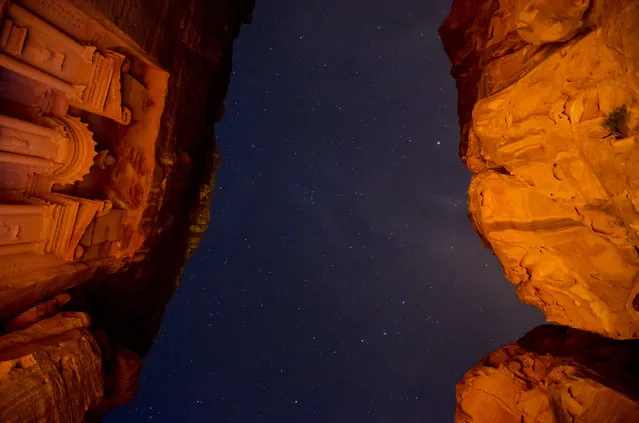
“Petra by Candlelight”. Candlelight illuminates the cavernous city of Petra during a cloudless night during a musical performance in front of Petra’s most recognizable monument, The Treasury. Location: Petra, Jordan. (Photo and caption by Joseph Howarth/National Geographic Traveler Photo Contest)
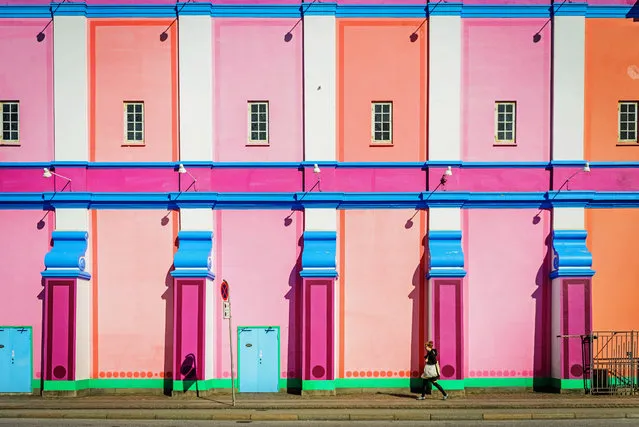
“Neon”. A young woman passes by the Palads theatre in Copenhagen, Denmark. (Photo and caption by Marcin Mokrzewski/National Geographic Traveler Photo Contest)

The eruption of Cordon Caulle began on June 4, 2011, located in the Region of Los Rios in Chile. For about 12 months, people and animals became accustomed to living with the daily fall of ash, which also caused problems in the air traffic in South America. The explosions and lightning during first days of the eruption could be seen from hundreds of miles around. This photograph was taken on the second night of eruption from the town of Lago Ranco. (Photo and caption by Francisco Negroni/National Geographic Traveler Photo Contest)
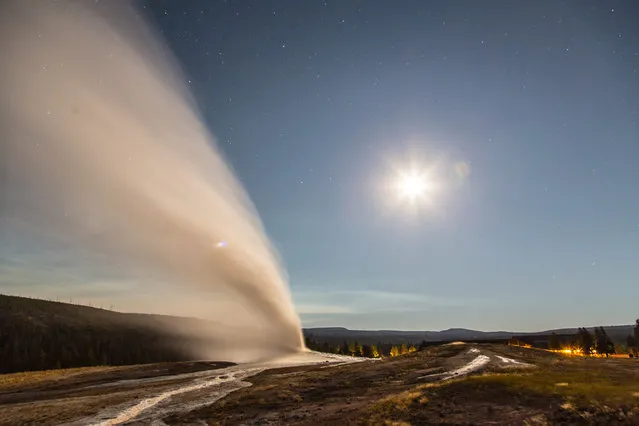
“Geyser eruption at night”. The eruption of old faithful geyser at night. Location: Old faithful geyser, Yellowstone National Park. (Photo and caption by Yang Li/National Geographic Traveler Photo Contest)
23 Jun 2013 11:24:00,
post received
0 comments
